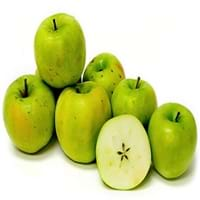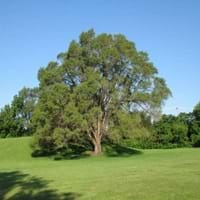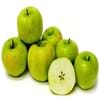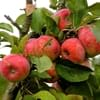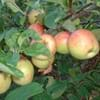Life Span
Perennial
Perennial
Origin
Eastern Europe, Southern Europe, Russia/Siberia, Southern Asia, Western Asia
Asia
Types
not available
Not Available
Number of Varieties
Not Available
Habitat
Cold Regions
Woodland Garden Canopy
USDA Hardiness Zone
4-8
2-9
Sunset Zone
7, 8, 9, 15, 16
A1, A2, A3, 1a, 1b, 2a, 2b, 3a, 3b, 4, 5, 6, 7, 8, 9, 10, 11, 14, 15, 16, 17, 18, 19, 20, 21
Habit
Oval or Rounded
Upright/Erect
Minimum Height
Not Available
Minimum Width
Not Available
Flower Color
White, Pink, Rose
Not Available
Flower Color Modifier
Bicolor
Bicolor
Fruit Color
Yellow green
Green, Tan
Leaf Color in Spring
Green
Dark Green
Leaf Color in Summer
Green
Dark Green
Leaf Color in Fall
Green, Light Yellow, Brown
Dark Green
Leaf Color in Winter
Light Green
Not Available
Leaf Shape
broad, flat
Elliptic
Plant Season
Spring, Summer, Fall
Summer
Sunlight
Full Sun
Full Sun
Growth Rate
Medium
Very Fast
Type of Soil
Clay, Loam
Clay, Loam, Sand
The pH of Soil
Acidic, Neutral
Acidic, Neutral, Alkaline
Soil Drainage
Well drained
Average
Tolerances
Drought
Pollution, Drought
Where to Plant?
Ground
Ground
How to Plant?
Seedlings
Seedlings
Plant Maintenance
Medium
Medium
Watering Requirements
Keep the Soil well drained
Do Not over Water, Needs watering once a week
In Summer
Lots of watering
Lots of watering
In Spring
Moderate
Moderate
In Winter
Average Water
Average Water
Soil pH
Acidic, Neutral
Acidic, Neutral, Alkaline
Soil Type
Clay, Loam
Clay, Loam, Sand
Soil Drainage Capacity
Well drained
Average
Sun Exposure
Full Sun
Full Sun
Pruning
Remove damaged leaves, Remove dead branches, Remove dead leaves
Remove diseased branches by the tool's blades dipped into the alcohol solution
Fertilizers
All-Purpose Liquid Fertilizer
20-5-10 fertilizer
Pests and Diseases
Aphids, Dry root rot, Watery soft rot
Aphids, Leaf spot, Powdery mildew
Plant Tolerance
Drought
Drought
Flowers
Showy
Insignificant
Flower Petal Number
Single
Not Available
Foliage Texture
Medium
Medium
Foliage Sheen
Matte
Matte
Attracts
Not Available
Insects, Not Available
Allergy
Mouth itching, Throat itching
Mild Allergen
Aesthetic Uses
Not Available
Bonsai
Beauty Benefits
Not Available
Not Available
Environmental Uses
Air purification
Air purification
Medicinal Uses
constipation, Diarrhea, Dysentry, Fever, Heart problems, Nutrients
Antibilious, Antidote, Demulcent, Diuretic, Febrifuge, Poultice
Part of Plant Used
Fruits
Fruits, Inner Bark, Leaves
Other Uses
Added to salads, Application in Furniture, Sauces, Used as a flavouring in food, Used As Food
Inner bark can be dried and made into noodles, Sauces, Sometimes used for making wine, Used as a potherb, Wood used for boat making
Used As Indoor Plant
Insignificant
No
Used As Outdoor Plant
Yes
Yes
Garden Design
Edible, Feature Plant, Fruit / Fruit Tree
Shade Trees
Botanical Name
MALUS domestica 'Mutsu'
ULMUS pumila
Common Name
Apple, Cider Apple, Mutsu Apple, Yellow Eating Apple,Crispin apple
Siberian Elm
In Hindi
साइडर सेब
Siberian Elm
In German
Crispin Apfel
Siberian Elm
In French
cidre de pomme
Siberian Elm
In Spanish
sidra de manzana
Siberiano Elm
In Greek
Cider Apple
Σιβηρίας Elm
In Portuguese
sidra de maçã
Siberian Elm
In Polish
Apple Cider
Siberian Elm
In Latin
Cider Apple
Siberian Elm
Phylum
Magnoliophyta
Magnoliophyta
Class
Magnoliopsida
Magnoliopsida
Clade
Angiosperms, Eudicots, Rosids
Angiosperms, Eudicots, Rosids
Tribe
Not Available
Not Available
Subfamily
Not Available
Not Available
Number of Species
Not Available
Not Available
Importance of Mutsu Apple and Siberian Elm
Want to have the most appropriate plant for your garden? You might want to know the importance of Mutsu Apple and Siberian Elm. Basically, these two plants vary in many aspects. Compare Mutsu Apple and Siberian Elm as they differ in many characteristics such as their life, care, benefits, facts, etc. Every gardener must at least have the slightest clue about the plants he wants to plant in his garden. Compare their benefits, which differ in many ways like facts and uses. The medicinal use of Mutsu Apple is constipation, Diarrhea, Dysentry, Fever, Heart problems and Nutrients whereas of Siberian Elm is Antibilious, Antidote, Demulcent, Diuretic, Febrifuge and Poultice. Mutsu Apple has beauty benefits as follows: Not Available while Siberian Elm has beauty benefits as follows: Not Available.
Compare Facts of Mutsu Apple vs Siberian Elm
How to choose the best garden plant for your garden depending upon its facts? Here garden plant comparison will help you to solve this query. Compare the facts of Mutsu Apple vs Siberian Elm and know which one to choose. As garden plants have benefits and other uses, allergy is also a major drawback of plants for some people. Allergic reactions of Mutsu Apple are Mouth itching and Throat itching whereas of Siberian Elm have Mild Allergen respectively. Having a fruit bearing plant in your garden can be a plus point of your garden. Mutsu Apple has showy fruits and Siberian Elm has no showy fruits. Also Mutsu Apple is not flowering and Siberian Elm is not flowering . You can compare Mutsu Apple and Siberian Elm facts and facts of other plants too.
